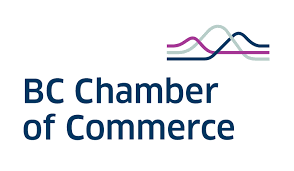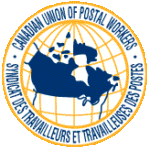COMMENT: Who decides what Canadians need?
Unless you are a magazine publisher, you’ve probably never heard of the Canada Magazine Fund. Administered by Heritage Canada, the CMF was established 24 years ago to “contribute towards the production of high-quality magazines showcasing the diverse work of a wide cross-section of Canadian creators” and to build “capacity to help ensure the continued growth and vitality of the Canadian magazine publishing industry”.
Over the years, the CMF did indeed help many Canadian publications, including small but important arts and issues-oriented magazines.
In 2010, the Conservative government incorporated the funding role of the CMF into the newly created Canadian Periodical Fund (CPF). Concerns were raised about the negative impact the accompanying changes could have on small magazine publishers. However, the remit of the new fund was reassuringly similar: to provide “financial assistance to Canadian print magazines, non-daily newspapers and digital periodicals to enable them to overcome market disadvantages and continue to provide Canadian readers with the content they choose to read”.
The emphasis on the word “they” is mine and made for reasons which will soon be clear.
Watershed Sentinel, BC’s scrappy environmental magazine, is a past and very grateful recipient of financial assistance through the CMF and the now defunct Publications Assistance Program. Last year the magazine applied for CPF funding to improve its on-line services for readers.
In April, editor Delores Broten was informed, in a letter written on behalf of Heritage Minister James Moore, that the application had been rejected. Apparently the magazine did not meet the government’s objective to fund projects which “meet the needs of Canadians”.
I’m curious to know exactly who decides what the needs of Canadians are.
In the past year, Watershed Sentinel has revealed:
- The betrayal of Canada’s own energy security by the rush to export liquefied natural gas to Asian markets.
- The backroom machinations of General Electric Canada, Talisman Energy and other members of the murky Aqueduct Alliance seeking to grab up rights to Canada’s water.
- The suspect process by which Canada’s Pest Management Regulatory Agency approves the use of pesticides, including the continued use of the neonicotinoids strongly linked to the global demise of crucial bee populations.
- How the Canadian government (along with major tar sands players), having abandoned all pretence of meeting Kyoto goals to reduce greenhouse gas emissions, is throwing money at carbon capture and storage, and other dubious money-making geo-engineering projects.
- The glaring inadequacies and corporate hijacking of safety regulations and enforcement in Canada and the US.
- How the absence of the precautionary principle in the approval process for chemical pollutants has led to dramatic increases in childhood ailments, including asthma, diabetes and Attention Deficit Hyperactivity Disorder.
- The known and suspected links between synthetic chemicals in the environment and the current breast cancer epidemic – and the role of Canadian and US breast cancer charities in keeping the focus not on prevention, but on the never-ending race for an ever-elusive cure.The vested interests behind plans to pipe diluted bitumen from Alberta’s tar sands through Canada’s most populous areas to east coast refineries.
- How Bill C-38 has dismantled environmental protection and blocked public participation.
- The growing body of evidence linking hydraulic fracturing with a variety of health and environmental problems.
- The dangers of the rush to embrace nuclear energy, after decades of failing to act on reducing greenhouse gas emissions.How the Harper government’s decision to tie foreign aid to the interests of Canadian mining companies harms the world’s most needy. (This March 2013 article prompted an indignant rebuttal from Julian Fantino, Minister of International Co-operation. Two days later, the government announced it was rolling the Canadian International Development Agency into the Department of Foreign Affairs and International Trade.)
- The close connection of Environment Minister Peter Kent and PR giant Hill and Knowlton, whose tar sands clients have successfully lobbied for the evisceration of Canada’s environmental protection laws.
- The full extent and dire consequences of Stephen Harper’s war on science.
Call me crazy, but I think these are things Canadians need to know.
Like science, environmental reporting is not popular with the Harper government. For example, earlier this year, before it shut down for good, the 25-year-old National Roundtable on Energy and Environment produced a final report, “Reflections of Past Leaders of the NREE”. Environment Minister Peter Kent forbade the public posting of the report (a leaked copy of which has been posted by DeSmog Canada) or any of the agency’s previous reports.
In the case of Watershed Sentinel, I’m not saying that what the magazine reports is why Heritage Canada rejected its funding application. But I am wondering.
Miranda Holmes is an associate editor of Watershed Sentinel.


























